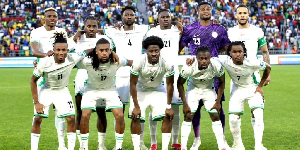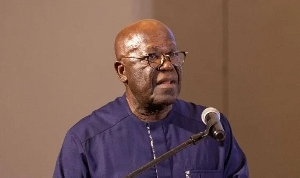Director-General of National Development Planning Commission, Dr Kodjo Esseim Mensah-Abrampa, says even though poverty in Ghana has been significantly reduced over the years, inequality is on the increase.
According to him, economic figures show the gap between the rich and the poor is not getting any closer and as such, more social interventions that will favour all need to be instituted.
“The gap between the rich and poor (the haves and the have nots) is gradually increasing in Ghana and this is something that we need to tackle in Ghana and that is why massive social interventions are very necessary to correct some of these things,” he noted.
He lauded interventions such as the Free SHS policy and National Health Insurance Scheme, which he says are helping bridge the gap.
“Free SHS is one of the biggest attempts and the biggest interventions to bridge the gap between the rich and the poor so that everybody can have education. The national health insurance, the expansion of it is very good because that provides everybody practically equal access to health facilities and also looking at providing the basic resources for agriculture production because that is where the bulk of our people who are subsistence reside and therefore you can improve there”.
Dr Mensah-Abrampa was speaking in an interview with Rev Dr Opuni Frimpong on 'What is Next?'.
The Ghanaian economy, according to the Statistical Service, benefited from the production of crude oil in commercial quantities and strong economic growth in 2011, leading to the attainment of a lower-middle-income status for the country.
Economic growth, however, decreased thereafter to a low of 3.7 percent in 2016 then increased in 2017.
It is however not clear if the growth has benefited all sections of society, including the poorest.
The GSS says to achieve the Sustainable Development Goal (SDG) on ending poverty in all its forms by 2030, a lot needs to be done.
Extreme poverty (people unable to meet their basic food needs) declined from 8.4 per cent in 2012/13 to 8.2 per cent in 2016/17. In absolute terms, more Ghanaians are living in extreme poverty: the number of people living in extreme poverty increased from 2.2 million in 2013 to 2.4 million in 2017, based on 2010 projections.
There is a lot of variation in the poverty incidence by region. While five of the 10 initial regions (Greater Accra, Western, Central, Eastern and Ashanti) had rates of poverty incidence lower than the national average of 23.4 percent, the remaining five had higher than the national average.
General News of Thursday, 16 January 2020
Source: www.ghanaweb.com
Gap between poor and rich increasing in Ghana - Dr Mensah-Abrampa
Entertainment












